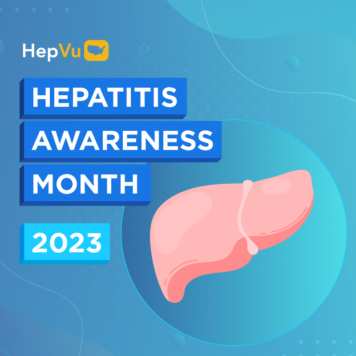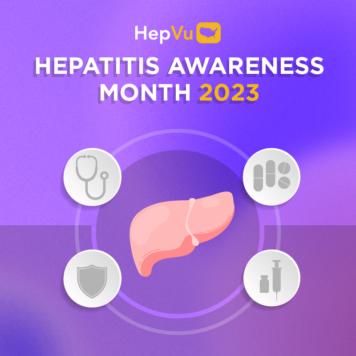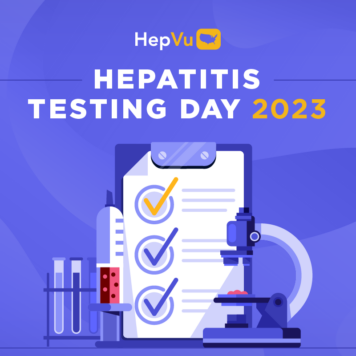Tessa Bialek, J.D., is a Managing Attorney with Civil Rights Litigation Clearinghouse at the University of Michigan Law School and Dr. Matthew J. Akiyama, M.D., is an Associate Professor in the Department of Medicine, Divisions of General Internal Medicine and Infectious Disease, at Montefiore Medical Center and Albert Einstein College of Medicine. Their new white paper, Policies for Expanding Hepatitis C Testing and Treatment in United States Prisons and Jails, was released in April.
What inspired you to research and write about the issues of Hepatitis C testing and treatment in prisons and jails? How did you first become involved in this field of work?
Tessa: I am an attorney with some background in prison conditions litigation. Currently, I work for the Civil Rights Litigation Clearinghouse at the University of Michigan Law School. Our Clearinghouse maintains a vast database of civil rights cases, comprising over 10,000 case summaries in our collection and nearly 70,000 litigation documents. This project focuses on using settlement agreements and other resources as roadmaps for criminal justice-related reform, stemming from our initiative to draw lessons from these litigation documents. The resulting white paper presents policy recommendations based on the insights gained. We chose this topic after reviewing the dozens of cases in our collection brought by people who are or were incarcerated and sought direct acting antiviral (DAA) treatment for their Hepatitis C. These cases, filed all over the country, have resulted in settlement agreements that have led to large-scale changes in testing and treatment for people living with Hepatitis C. It is often not just the person who filed the lawsuit that gets DAA treatments, it’s hundreds of other people in those systems.
Matt: I am an infectious diseases clinician and researcher at Albert Einstein College of Medicine and Montefiore Medical Center in the Bronx. When I was an infectious diseases fellow at New York University and Bellevue Hospital, I helped to staff the jail health clinic at Bellevue where patients from Rikers Island sought consultation. The most common disease we saw was Hepatitis C, but access to the newly developed DAAs was limited due to their cost. Witnessing the despair and frustration among patients and providers, I became interested in studying and advocating for improved access to Hepatitis C diagnosis and treatment among people who are incarcerated, and people impacted by the criminal legal system.
How critical do you consider treating Hepatitis C in prisons and jails to be towards achieving the overall goal of viral hepatitis elimination?
Matt: Hepatitis C treatment in prisons and jails is essential for Hepatitis C elimination. It is estimated that 1 in 3 people living with Hepatitis C will be incarcerated. This prevalence can be attributed to the overlap between viral hepatitis risk factors like substance use and high rates of incarceration among people who use drugs. Jails and prisons serve as crucial points of access for providing care and treatment to a highly marginalized population. Given that people incarcerated in jails and prisons are frequently left out of the healthcare system, it becomes critical to reach out to them where they are and offer testing and treatment within those settings.
Nationally, there are many jail and prison systems that have conducted little Hepatitis C testing and treatment. Therefore, it becomes imperative to engage stakeholders, secure funding, and provide mentorship to support the adoption of national Hepatitis C guidelines within these systems.
How can prisons and jails effectively implement universal opt-out Hepatitis C testing, including offering testing at intake and/or first clinical evaluation and at as many medical contact points as possible, while ensuring prompt delivery of results and information about Hepatitis C and next steps?
Matt: One time screening for hepatitis C has been recommended for all adults by the United States Preventive Services Task Force (USPSTF) and the U.S. Centers for Disease Control and Prevention (CDC) for several years. High-risk settings like jails and prisons should be no exception to this. Universal opt-out testing is important in jails as the initial entry point into the carceral system. However, this can be a challenging ask for jails because lengths of stay are often short, and can vary from days to weeks, which is not enough time to complete treatment while incarcerated.
Even if only testing is offered, wrap-around services such as discharge planning and patient navigation can be provided to increase the chances of people linking to care in the community. This is particularly important because the transition to the community is a challenging time with many competing priorities, so rates of disengagement are high.
Transition to prison offers another opportunity to provide testing for those who have not be able to access it and with more predictable lengths of stay, treatment in prison is often less complicated. Other key elements include partnerships with community health care providers to assist with the delivery of results and counseling and evaluation for folks released during this process. It is important to remember that policy changes in this realm require resources to increase staffing and access to DAAs.
How do settlement agreements in states across the country that have expanded Hepatitis C testing and broadened access to DAA (direct-acting antiviral) treatment reflect a growing understanding of the benefits of widespread testing and treatment for incarcerated individuals? How can prisons and jails ensure continuity of care for individuals on DAA treatment who are incarcerated, transferred, or released during treatment?
Tessa: From a recent consent decree in a case out of South Carolina, called Geissler v. Stirling, (No. 4:17-cv-01746 (D. S.C. June 8, 2020)), the parties explain:
“This Court and the Parties recognize the need to test inmates of the South Carolina Department of Corrections (“SCDC”) for HCV and to provide treatment to those inmates who have the disease. Such a commitment is necessary to: (a) treat inmates diagnosed with HCV with Medication that substantially increases the chances of the diagnosed inmate being cured of HCV; (b) significantly reduce the spread of HCV among the SCDC inmate population; and (c) significantly reduce the spread of HCV among the general population of South Carolina as inmates are released from incarceration.”
So, there, the reason for the agreement is explicit. The parties made these changes in order to treat and cure individuals, to reduce the spread of the virus within the correctional system, and to reduce the spread of the virus in the community after folks are released from incarceration.
The substantive provisions of these settlement agreements also reflect a growing understanding of the benefits of expanding treatment. For example, a common feature in these agreements is expanding eligibility for DAAs from just those with the highest APRI or Fibrosis scores to, eventually, everyone with Hepatitis C. This aligns with prevailing public health guidance that DAA treatment is appropriate at all stages of the disease and should be offered before someone’s condition worsens or their liver starts to deteriorate. Offering the cure widely and early benefits the individual, the correctional community, and the broader community.
I want to emphasize that settlement agreements, depending on the state, come with or lead to the funding to put them into action, which is a hugely important piece of all of this. In that sense, settlement agreements show us what scale up can look like when systems have access to the additional funding and resources necessary to support that scale up.
On the continuity of care front, prison and jail systems must work to ensure that folks who enter custody already on treatment are able to keep their medication with them or continue to access it. The same goes for transfer—medication, prescriptions, and relevant medical records should follow the person between facilities and systems. Community partnerships with state and local health departments and other community health providers, at all stages, are crucial. Those partnerships should be developed early and proactively and can support everything from providing test results for folks released before getting those results, to following up with education, counseling, and evaluation, to providing medication and continuity of care upon release, including confirming SVR at the appropriate time.
In your opinion, what steps need to be taken by policymakers and correctional systems to implement the policy recommendations and promote successful outcomes for people living with Hepatitis C as outlined in the white paper?
Tessa: Policymakers and correctional systems must understand this as part of their duty to provide minimally adequate healthcare to people in state or local custody. DAA treatment has become the treatment for Hepatitis C, and, as many courts have found, the evaluate-and-wait approach may not pass constitutional muster. Widespread, early-stage DAA treatment is a cost-effective investment in present and future community health. Those able to ask for or to direct resources for expanding treatment must first figure out what resources are needed— including funding for DAA medication, staffing, and more—and then request those resources or put those resources in place. This process might involve thinking creatively about funding as well as advocacy to get the cost of DAA medications down. Additionally, robust community partnerships are essential and should be developed in the earliest stages of scale-up.
Matt: Political will is also a critical component from the federal level to state and municipal levels, including leaders of state and municipal Departments of Corrections and the correctional health care systems that staff them. The role of advocacy in petitioning these leaders to integrate Hepatitis C services has been critical for gains made so far. It is exciting that there may be new resources allocated for these purposes through the national Hepatitis C Elimination Plan that is in discussion in Congress. Such resources are needed not only to help fund medications but also to support the workforce needed to conduct this work. While specialist care is not necessarily needed due to the ease of DAA therapy, the infrastructure for screening, confirming an active infection, initiating treatment, and other important elements of comprehensive Hepatitis C care, like vaccination for Hepatitis B, will be required. Innovative clinician mentoring programs, pharmacist- or nurse-led care, and telemedicine programs are important to expand workforce capacity. Existing programs for other conditions like HIV that include wraparound services like discharge planning and patient navigation can also be retooled since the models of care are very similar.




